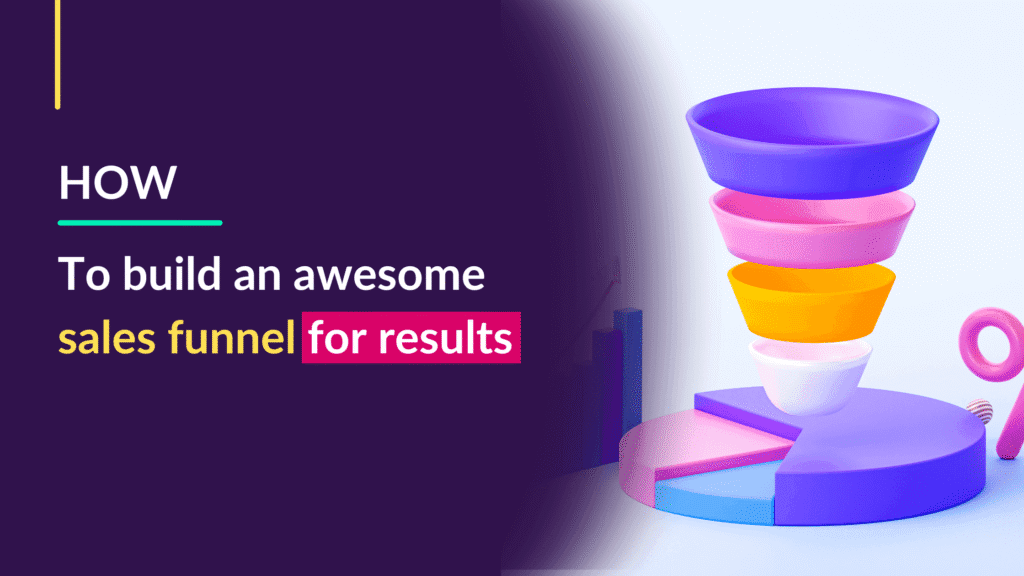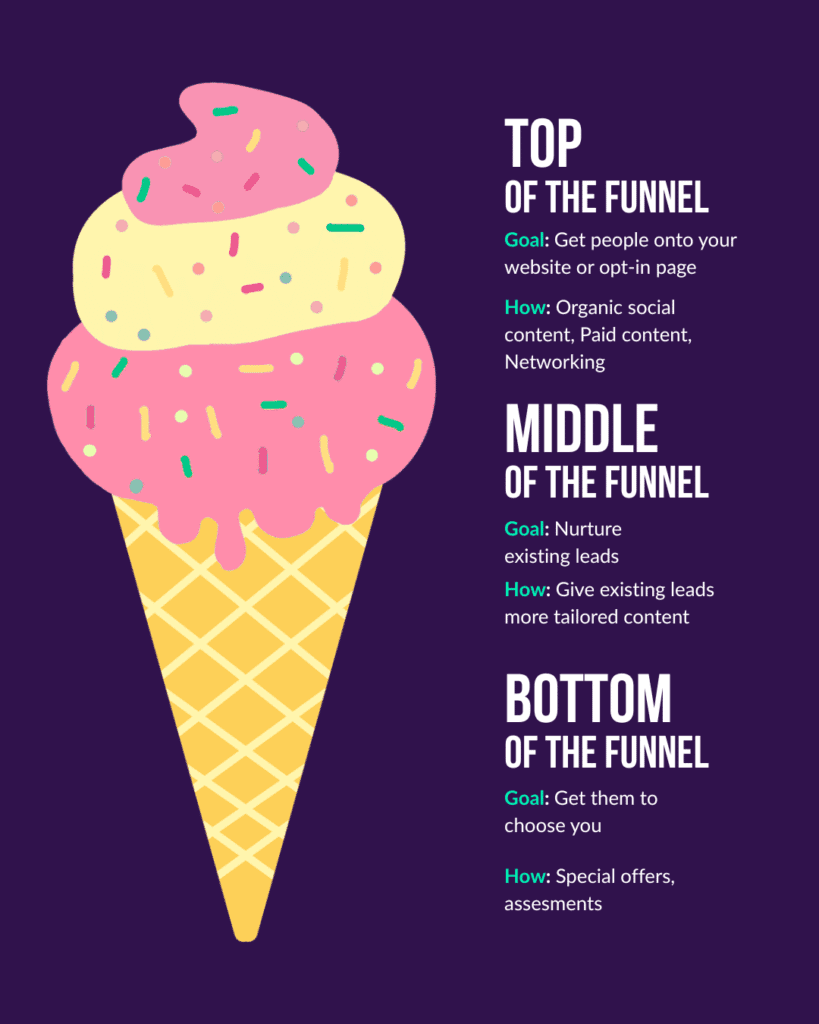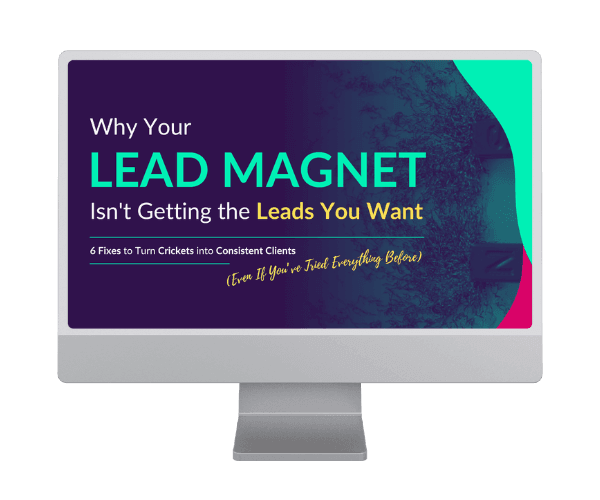
Creating a sales funnel might sound simple, everyone online seems to be doing it. But when you sit down to actually build a sales funnel that works? It can feel more like a chaotic Canva session than a streamlined system that brings in leads and clients.
But an effective sales funnel strategy isn’t about fancy tools or marketing hacks. It’s about guiding your audience through a journey, from just looking to just bought, with content, clarity, and connection.
What is a sales funnel (and why do you need one)?
Let’s talk about ice cream. Yes, really.
Picture a cone, piled high with your favourite flavour. The top? That’s wide and inviting, just like the beginning of a sales funnel. It’s where someone first spots your brand: maybe they read a blog, see a Reel, or stumble across your lead magnet.
As they move further down the cone (or the funnel), things get more focused. They’re engaging with your content, learning how you can help, and deciding if you’re their person.
By the time they reach the bottom? That’s the decision stage. The satisfying bite. Where curiosity turns into commitment, and your offer becomes the answer they’ve been looking for.
A sales funnel is simply the path someone takes from never heard of you to can I work with you?
And when it’s built properly, it doesn’t feel like selling, it feels like service.

Why having a sales funnel matters
The online world is full of noise. People are overwhelmed. A funnel gives structure to your strategy—so you’re not relying on random posts and crossed fingers.
A smart sales funnel strategy helps you:
Guide people through a clear buyer journey
Increase conversion rates by serving the right message at the right time
Build trust with consistent value (not constant selling)
Make your marketing feel more intentional, not reactive
It works for service providers, coaches, digital products, courses, anything.
But most funnels flop because people focus on the tool (Mailchimp! Kajabi! ClickFunnels!) instead of the message.
Let’s do it right.
Step-by-step: how to build an effective sales funnel
Step 1: Know your audience
Who are you helping? What are they stuck with? What are they searching for when no one’s looking?
Do your research:
Build a buyer persona
Use SEO tools like Ubersuggest or Google Trends
Look at what content performs well in your niche
Then create content that answers real questions and solves specific problems.
Step 2: Create top-of-funnel content
This is how people find you.
Blog posts (SEO gold)
Social posts and Reels
YouTube videos or podcasts
Focus on helpful, not salesy. Use keyword-rich headlines. Share practical tips. Speak to their pain points and curiosities.
Your goal: get discovered. Build trust. Invite curiosity.
Step 3: Design landing pages that convert
There’s a lot of talk about landing pages, but the biggest mistake? Thinking they’re only for selling.
Landing pages should exist at every stage of your funnel. From awareness to consideration to decision.
When you personalise landing pages to match where someone is in the journey, your conversion rate will almost always improve.
Your landing page isn’t just a sales tool. It’s a place to:
Offer helpful information
Build credibility
Demonstrate why you’re the best choice
This is especially important for new visitors who don’t know you yet. They’re not ready to buy—but they are ready to learn, engage, and decide if you’re worth sticking around for.
Don’t get too complicated. You can even turn your website homepage or LinkedIn profile into a landing page. Just guide the visitor clearly to one action: download the freebie, book the call, check out the offer.
Now, if you’re building out a pricing page or high-conversion offer page? Optimise the hell out of it:
Review how people are currently using the page (use heat maps or analytics)
Show your ideal price next to a more expensive one (price anchoring works)
Use clear, jargon-free language
Add FAQs to answer objections in advance
Create urgency (limited-time bonus, fast-action incentive)
Offer a free trial if it makes sense
Limit options (4–5 max is plenty)
Show social proof (especially for SaaS, services, or ecommerce)
Prioritise mobile experience, no pinching, zooming, or endless scrolling
This isn’t about looking fancy. It’s about making the decision easy.
Step 4: Build a lead magnet that pulls its weight
This is your freebie. Your “come and see how I can help” moment.
A good lead magnet should:
Solve one small, specific problem
Be quick to consume (checklist, quiz, short guide)
Naturally link to your paid offer
Bonus: it grows your email list. That means you can keep talking to people who already said they’re interested.

Watch our Free Masterclass - Why your lead magnet isn't getting the leads you want
Step 5: Nurture leads through email
This is where the magic happens.
Your email sequence builds trust and moves people from “thanks for the freebie” to “where do I buy?”
Try this 5-day structure:
Welcome + what to expect
More value (tip, story, bonus)
Social proof (testimonial or case study)
Introduce your offer
Direct call to action
Use personalisation. Keep it simple. Write like a human, not a robot from a 2006 sales webinar.
87% of B2B marketers use email to generate leads. 31% say it’s their highest-ROI channel.
Step 6: Analyse and optimise your funnel
This is the part most people skip.
Look at:
Page traffic
Conversion rates (opt-ins, purchases)
Email opens and clicks
Where people drop off
Use tools like Google Analytics, Hotjar, and your email platform’s reporting.
Test headlines, button text, form length. Small tweaks can mean big improvements.
Sales funnel strategies that actually work
Content marketing – Blogs, video, and social posts that solve real problems and rank in search
Social proof – Testimonials, case studies, client wins
Personalisation – Tailor messages based on behaviour or interests
Incentives – Time-limited offers, bonuses, free trials
Ongoing optimisation – Funnel = never finished. Keep testing and tweaking.
Let your sales funnel work as hard as you do
If you’re tired of winging it with content, crossing your fingers, and hoping your next post will do the trick—it’s time to build a funnel that actually works.
One that starts with service, builds trust, and ends with sales. One that guides your people from “Who are you again?” to “Hell yes, I’m in.”
Because your brand deserves more than just a pretty Instagram. It deserves a strategy that sells.
Want help building a funnel that flows?
Let’s chat. Book a free call and we’ll look at where your funnel’s falling flat—and what we can do to fix it.
Whether you need lead magnet strategy, landing page feedback, or full setup in MailerLite or Mailchimp, we’ll figure out what works for you.
More blogs
-
13 Smart Ways to Promote Your Lead Magnet Effectively
-
13 creative lead magnet ideas business owners swear by
-
How To Build An Awesome Sales Funnel for Results
-
Lead magnet design NZ: Sparking connection for LO/NO Club’s sober-curious community
-
Therapist Branding Case Study: How Kate launched her training business with a brand that reflects her expertise